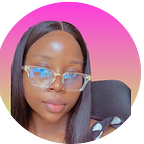Your portfolio may showcase sophisticated projects, but it may still not attract clients if certain crucial aspects are not executed correctly.
“If I am starting all over again, what should I consider?”
Impactful Design Solutions
One of the fundamentals of a successful design career is creating clean user interface designs that offer clear solutions to common problems faced by the majority. Let’s take Lagos, Nigeria, as a prime example — it’s Africa’s largest and most populated city. Creating a design solution for a BRT transportation system app that enables users to pay for their transport fares via a mobile app or a card, eliminating the need for long queues at bus stops. Users can simply tap their mobile devices/cards to access the bus and secure their seats. A project like this demonstrates a commitment to making a significant impact through design, which is particularly valuable for a new designer trying to break into the industry
Showcase Your Case Studies:
In addition to impactful design work, you should think about how many case studies you want to feature. According to popular opinion, having 3–4 case studies is the sweet spot. Personally, I secured my first role as a product designer with 2 case studies and continued to build my portfolio until I had a third one. For your fresh start, aim to have 3 case studies ready to go when opportunities arise. Crafting compelling case studies can be challenging, given the various approaches available online. However, with the right perspective and a captivating storytelling style for your design process, you’ll find that by your second case study, you’ll have mastered the art.
Highlight Your Strengths:
It is commonly said to prioritize quality over quantity, taking the time to focus on your strengths after several rounds of practice and experimentation. Your portfolio should showcase what you excel at to the fullest extent possible. Initially, this may have been challenging for me because I didn’t want to come across as “overdoing it.” However, in today’s competitive world, it’s essential to confidently showcase your work, particularly emphasizing your strengths. It becomes more manageable when you realize that many skills you excel at, aside from design, are transferable skills and can help elevate your design career. Soft skills like problem-solving, visual communication, presentation, and empathy can all be effectively expressed in your portfolio, setting you apart and making a lasting impression.
Think Diverse Selection of Projects
Your very first portfolio should feature a diverse range of projects. Think of yourself as a UX Generalist, wearing different hats whenever possible. A diverse selection will open doors to various opportunities, allowing you to handpick the projects that resonate best with you. Keep your portfolio clean and simple while still showcasing high quality, your strengths, and practical design solutions.
Seek Feedback from Peers and Mentors
Building an effective design portfolio hinges on feedback and continuous refinement. Seeking external input from peers and mentors provides an objective perspective on your work, revealing areas for improvement and helping you spot potential issues with usability and content clarity. Usability testing can further refine the user experience, ensuring smooth navigation and engagement. Ultimately, feedback and ongoing refinement are essential for creating a compelling and relevant design portfolio that effectively communicates your skills and style to your audience, fostering confidence in your work and positioning you for success in the design field.
After taking all of this into consideration, it is important to think about where you want to present your work — on an accessible hosting platform, whether paid or free.
It can be an overwhelming process at times, but when you take the time to organize your thoughts and determine what truly matters to you, it becomes more achievable. I often had to remind myself that there’s no such thing as a perfect portfolio. However, you will certainly see growth and improvement over time with more practice.
Thank you for taking the time to read all the way through. Your applause and encouragement mean a lot.
